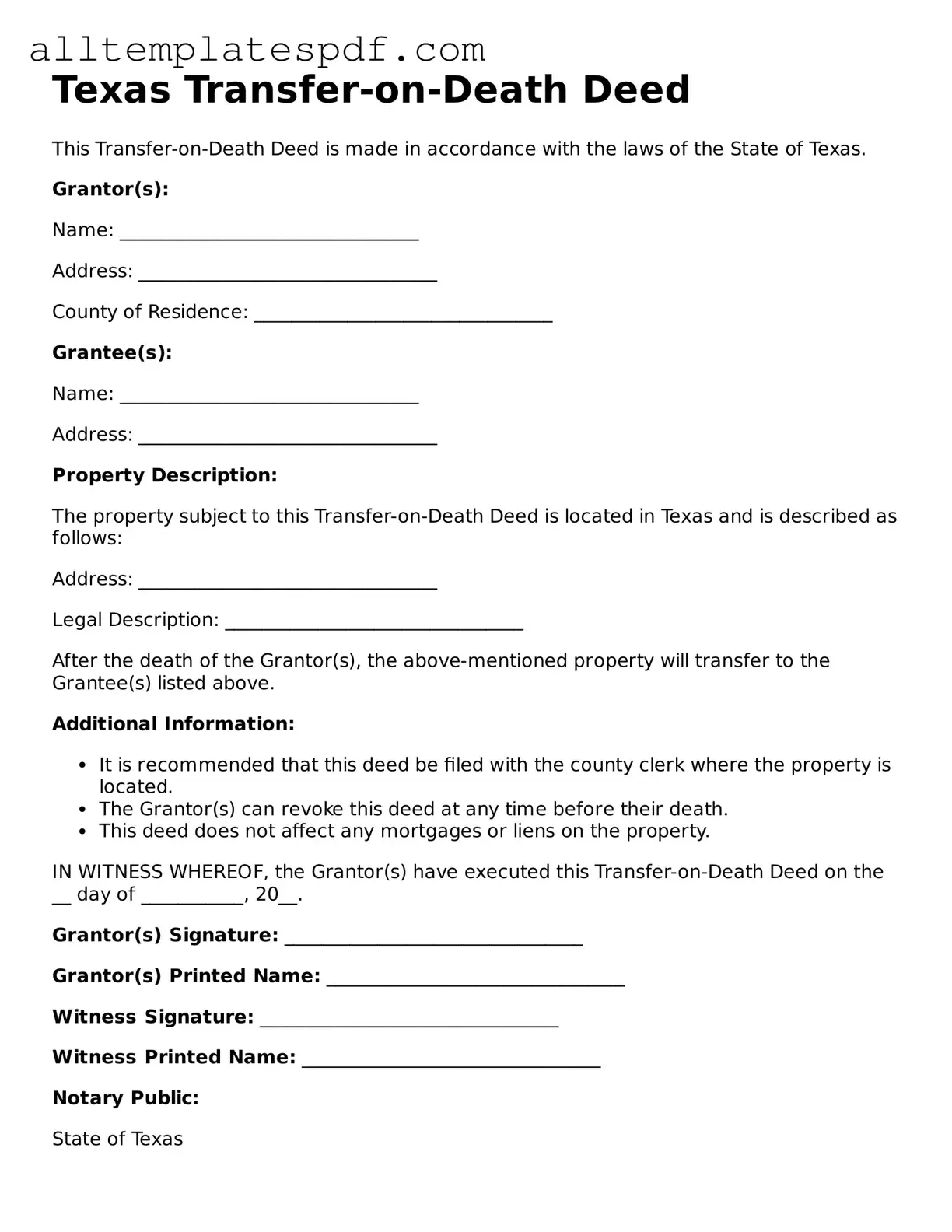Filling out a Texas Transfer-on-Death Deed form can seem straightforward, but many people make mistakes that can lead to complications down the line. One common error is failing to properly identify the property. It's essential to include a complete legal description of the property, not just the address. Without this, the deed may be deemed invalid.
Another mistake is neglecting to name the beneficiaries clearly. If the beneficiaries are not identified with full names, or if there are ambiguities, disputes may arise after the property owner's death. It's important to be specific to avoid confusion.
Some individuals forget to sign the deed. A signature is a crucial part of the process. Without it, the deed cannot be executed. Additionally, witnesses are often required. Not including the necessary witnesses can invalidate the deed, so it's vital to follow the state's requirements closely.
Another issue arises when people fail to record the deed with the county clerk. Even if the deed is filled out correctly, it must be filed to be effective. If it remains unrecorded, the transfer may not take place as intended.
People sometimes assume that a Transfer-on-Death Deed can be revoked verbally. This is not the case. Revocation must be done in writing and executed in the same manner as the original deed. Failing to follow this process can lead to unintended consequences.
Misunderstanding the implications of the deed is also a frequent mistake. Some individuals believe that the Transfer-on-Death Deed can be used to avoid all taxes or debts. However, this is not true. The property may still be subject to taxes and claims from creditors.
Another common error is not considering the impact on Medicaid eligibility. Transferring property through a Transfer-on-Death Deed can affect a person's eligibility for certain benefits. It’s wise to consult with a professional before making such decisions.
People often overlook the importance of keeping the deed in a safe place. If the deed cannot be found after the property owner's death, the intended transfer may not happen. It's crucial to inform beneficiaries about the deed's existence and its location.
Finally, some individuals mistakenly think that once the deed is filed, no further action is needed. It’s important to review the deed periodically, especially if there are changes in family circumstances or property status. Keeping the deed updated ensures that it reflects current intentions.
